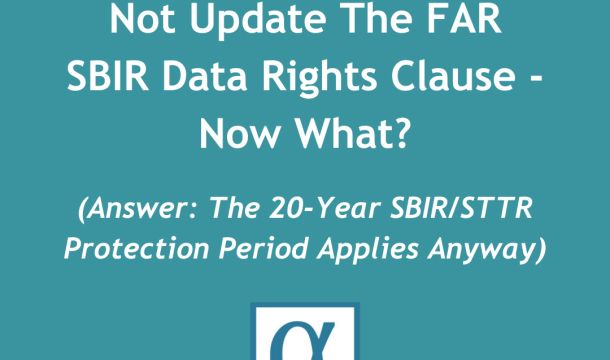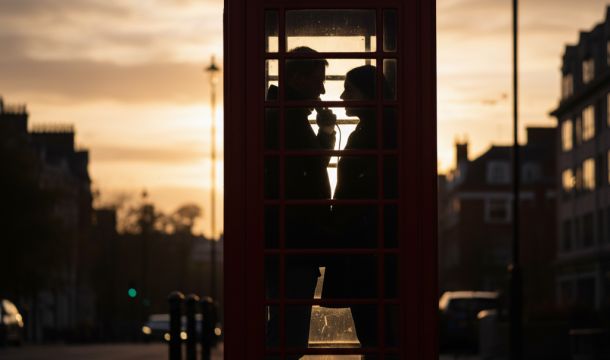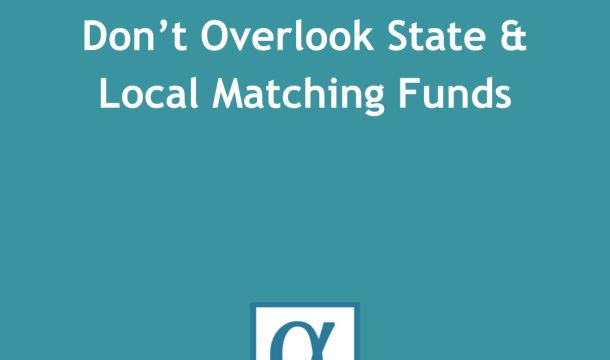The GovCon Bulletin™
DOL Issues Final Rule Establishing Paid Sick Leave For Federal Government Contractors
On September 30, 2016, the U.S. Department of Labor (DOL) issued a Final Rule implementing the mandate under Executive Order 13706 (Executive Order) that established paid sick leave for federal contractors. The Executive Order, which was signed on September 15, 2015 (described in our prior bulletin here) requires parties that contract with the Federal Government to provide their employees with up to 7 days (56 hours) of paid sick leave annually, including paid leave allowing for family care. The Executive Order directed DOL to implement its requirements. DOL’s Final Rule (found here), which does that, is summarized below.
Covered Contracts
The Executive Order applies to new contracts and replacements for expiring contracts with the Federal Government resulting from solicitations issued on or after January 1, 2017, or that are awarded outside the solicitation process on or after January 1, 2017. Coverage of contracts and employees under the Final Rule is nearly identical to coverage under the executive order that requires the payment of a minimum wage to employees of Federal contractors, except that the Final Rule also covers employees who qualify for an exemption from the FLSA’s minimum wage and overtime provisions and certain contracts with the U.S. Postal Service. Under the Final Rule, the Executive Order applies to four major categories of contracts:
(1) procurement contracts for construction covered by the Davis-Bacon Act (DBA);
(2) service contracts covered by the McNamara-O’Hara Service Contract Act (SCA);
(3) concessions contracts, including any concessions contracts excluded from the SCA by the Department of Labor’s regulations at 29 CFR 4.133(b); and
(4) contracts in connection with Federal property or lands and related to offering services for Federal employees, their dependents, or the general public.
In addition, any subcontract of a covered contract that (like the upper-tier contract) falls into one of these four categories is subject to the paid sick leave requirements.
The Final Rule contains certain narrow exclusions from coverage for the following types of contractual agreements:
(1) grants;
(2) contracts and agreements with and grants to Indian Tribes under Public Law 93-638, as amended;
(3) any procurement contracts for construction that are not subject to the DBA (i.e., procurement contracts for construction under $2,000); and
(4) any contracts for services, except for those otherwise expressly covered by the Final Rule, that are exempted from coverage under the SCA or its implementing regulations.
The Final Rule also excludes contracts for the manufacturing or furnishing of materials, supplies, articles, or equipment to the Federal Government, including those subject to the Walsh-Healey Public Contracts Act.
Covered Employees
The Final Rule and Executive Order apply to any person engaged in performing work on or in connection with a contract covered by the Executive Order whose wages are governed by the SCA, DBA, or Fair Labor Standards Act (FLSA), including employees who qualify for an exemption from the FLSA’s minimum wage and overtime provisions. The Final Rule includes a narrow exemption from the rule’s accrual requirements for employees who perform work duties necessary to the performance of a covered contract (but who are not directly engaged in performing the specific work called for by the contract) and who spend less than 20 percent of their hours worked in a particular workweek performing work in connection with such contracts.
Collective Bargaining Agreements
If a collective bargaining agreement (CBA) that is ratified before September 30, 2016, applies to an employee’s work performed on or in connection with a covered contract, and the CBA provides the employee with at least 56 hours (or 7 days) of paid sick time (or paid time off that may be used for reasons related to sickness or health care) each year, the Executive Order and the Final Rule will not apply to the employee until the date the agreement terminates or January 1, 2020, whichever is first. If the CBA provides paid sick time (or paid time off that may be used for reasons related to sickness or health care) each year, but the amount provided under the CBA is less than 56 hours (or 7 days), the contractor must provide covered employees with the difference between 56 hours (or 7 days) and the amount provided under the existing CBA in a manner consistent with the Executive Order and Final Rule or the terms and conditions of the CBA.
Paid Sick Leave
Accrual
Employees accrue 1 hour of paid sick leave for every 30 hours worked on or in connection with a covered contract. As for employees for whom contractors are not already required to keep records of hours worked pursuant to the DBA, SCA, or FLSA (e.g., employees who are employed in a bona fide executive, administrative, or professional capacity under FLSA regulations), contractors can assume that the employees are working on or in connection with covered contracts for 40 hours each week. Contractors are also permitted to estimate time their employees work in connection with (rather than on) a covered contract as long as the estimate is reasonable and based on verifiable information. The Final Rule also creates an option for contractors to provide an employee with at least 56 hours of paid sick leave at the beginning of each accrual year rather than allowing the employee to accrue leave based on hours worked. Accrual is calculated, and employees are to be notified in writing of the amount of paid sick leave they have available, at the end of each pay period or each month, whichever interval is shorter.
Maximum Accrual, Carryover, Reinstatement, and Payment for Unused Leave
Contractors may limit the amount of paid sick leave employees may accrue to 56 hours each year and must permit employees to carry over accrued, unused paid sick leave from one year to the next. Contractors may also limit the amount of paid sick leave employees have accrued to 56 hours at any point in time. Contractors are required to reinstate employees’ accrued, unused paid sick leave if the employees are rehired within 12 months after separation unless contractors provide payment to employees for accrued, unused paid sick leave upon separation. Contractors are not required to cash out employees for accrued, unused paid sick leave at the time of a job separation, but if they do provide cash-out, they will not be required to reinstate unused leave.
Use
An employee may use paid sick leave for an absence resulting from:
(i) physical or mental illness, injury, or medical condition of the employee;
(ii) obtaining diagnosis, care, or preventive care from a health care provider by the employee;
(iii) caring for the employee’s child, parent, spouse, domestic partner, or any other individual related by blood or affinity whose close association with the employee is the equivalent of a family relationship who has any of the conditions or need for diagnosis, care, or preventive care described in (i) or (ii); or
(iv) domestic violence, sexual assault, or stalking, if the time absent from work is for the purposes described in (i) or (ii) or to obtain additional counseling, seek relocation, seek assistance from a victim services organization, take related legal action, or assist an individual related to the employee as described in (iii) in engaging in any of these activities.
Contractors must allow employees to use paid sick leave in increments as small as one hour (with a narrow exception for employees whose work makes it physically impossible to leave or return to the job during a shift). Contractors may only limit the amount of paid sick leave an employee uses at once or per year on the basis of how much paid sick leave the employee has available. When employees use paid sick leave, contractors must provide them with the same regular pay and benefits they would have received if they had not used the leave, except that they need not earn additional paid sick leave during that time.
Requests to Use Leave
An employee’s request to use paid sick leave may be made orally or in writing, but must be made at least 7 calendar days in advance where the need for the leave is foreseeable, and in other cases as soon as is practicable. A contractor must communicate any denial of a request in writing, with an explanation for the denial — which cannot be based on whether the employee has found a replacement worker or on the contractor’s operational needs.
Certification or Documentation of the Need to Use Leave
A contractor may require certification only for absences of three or more consecutive full days, and the employee must have received notice of the requirement to provide certification or documentation before he or she returns to work. Certification must be issued by a health care provider if paid sick leave is used for the physical or mental illness, injury, or medical condition of the employee; obtaining diagnosis, care, or preventive care from a health care provider by the employee; or caring for the employee’s child, parent, spouse, domestic partner, or any other individual related by blood or affinity. If the paid sick leave is used for an absence resulting from domestic violence, sexual assault, or stalking, documentation can be from a health care provider, counselor, representative of a victim services organization, attorney, clergy member, family member, or close friend; and self-certification is also permitted. Records relating to medical histories shall be maintained as confidential records, and contractors are prohibited from disclosing any verification information and are required to maintain confidentiality about domestic abuse, sexual assault, or stalking, unless the employee consents or when disclosure is required by law.
Interaction with Other Laws and Paid Time Off (PTO) Policies
A contractor may not use paid sick leave required by the Executive Order and Final Rule toward the fulfillment of its SCA or DBA obligations. A contractor’s obligations under the Executive Order and Final Rule have no effect on its obligations to comply with the Family and Medical Leave Act (FMLA); paid sick leave may be substituted for (i.e., may run concurrently with) unpaid FMLA leave, and all notices and certifications that satisfy FMLA requirements will satisfy the request for leave and certification requirements of the Final Rule. With respect to state or local paid sick time laws, contractors must comply with any such laws as well as the Executive Order and Final Rule, but contractors may satisfy their Executive Order obligations by providing paid sick time that also fulfills the requirements of a State or local law provided that the paid sick time is accrued and may be used in a manner that meets or exceeds all of the requirements of the Executive Order and Final Rule. Where the requirements of an applicable state or local law and the Final Rule differ, satisfying both will require a contractor to comply with the requirement that is more generous to employees. A contractor’s existing PTO policy can fulfill the paid sick leave requirements of the Executive Order as long as it provides employees with at least the same rights and benefits as the Final Rule requires. So if a contractor provides 56 hours of PTO that meets the requirements described in the Executive Order and the Final Rule and employees can use the leave for any purpose, the contractor does not have to provide separate paid sick leave even if an employee uses all of the time for vacation. As for PTO policies that provide more than 56 hours of leave, a contractor may choose to either (1) provide all PTO used for the purposes described in the Final Rule in compliance with all of the rule’s requirements or (2) track, and make and maintain records reflecting, the amount of paid time off an employee uses for the purposes described in the rule, in which case the contractor need only provide, for each accrual year, up to 56 hours of PTO the employee requests to use for such purposes that complies with the rule’s requirements, such as for certification, documentation and recordkeeping.
Multiemployer Plans
A contractor may fulfill its obligations under the Executive Order jointly with other contractors who make contributions to a multiemployer plan (maintained pursuant to one or more CBAs) on behalf of employees who receive access to paid sick leave that complies with the Executive Order.
Enforcement Procedures
Complaints may be filed with DOL’s Wage and Hour Division (WHD) by any person or entity that believes a violation of the Executive Order or the Final Rule has occurred. The Final Rule contains a mechanism for WHD investigations and informal complaint resolution and specifies remedies and sanctions for violations of the Executive Order and the Final Rule, including the payment of damages and debarment. The Final Rule also includes an administrative process, including administrative hearings, to resolve disputes of fact or law.



